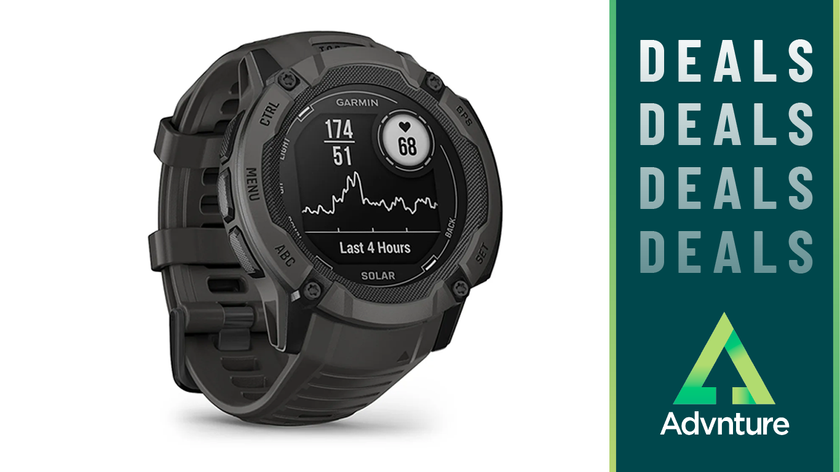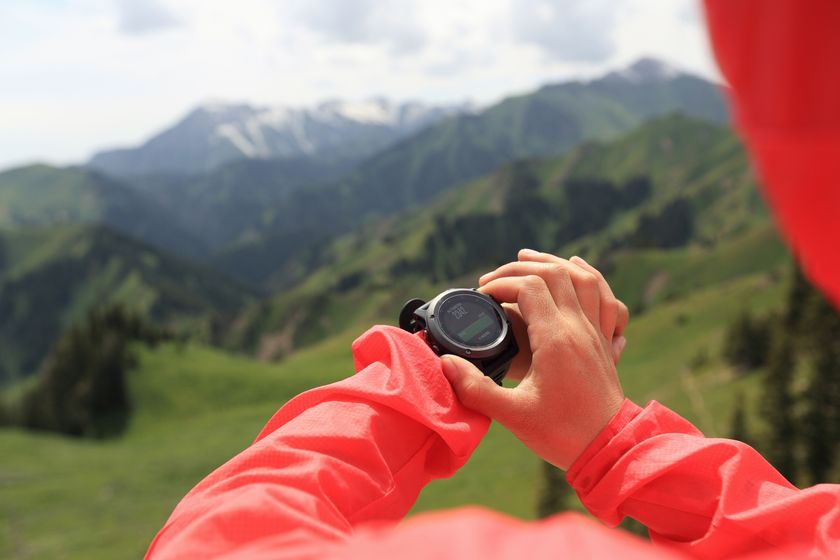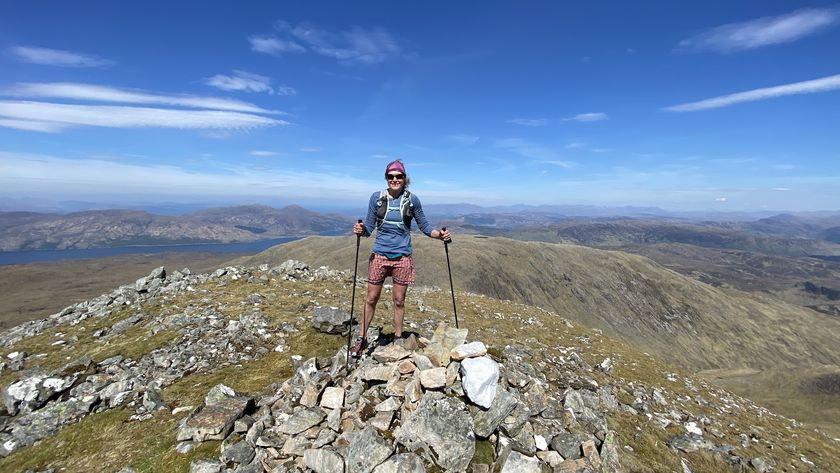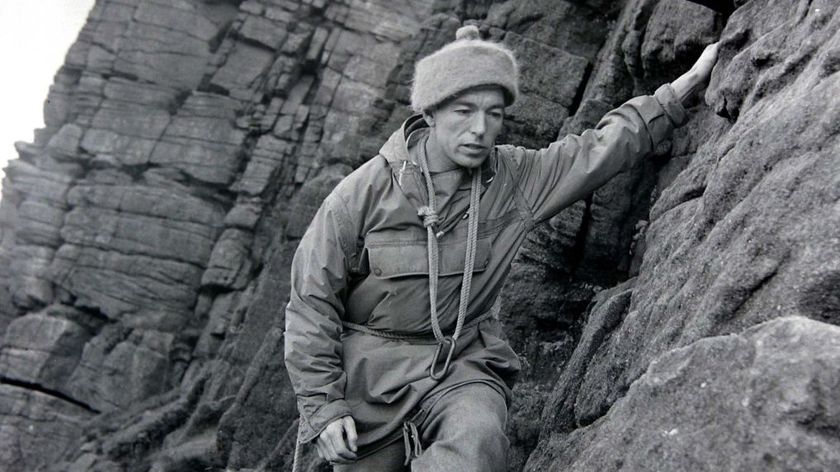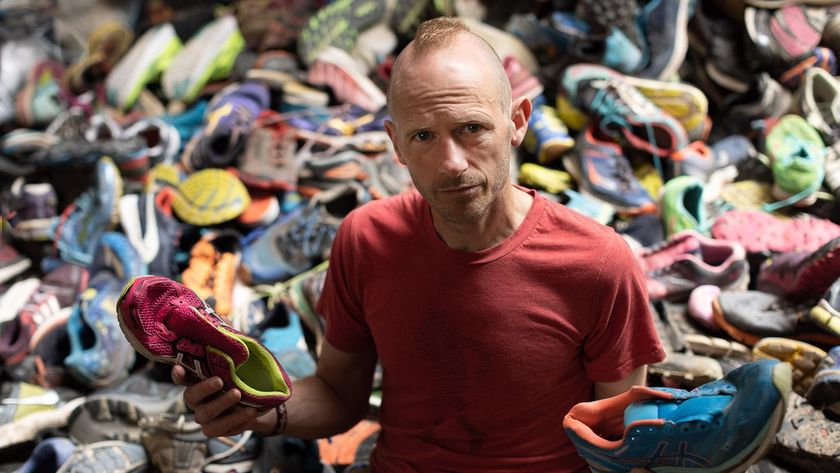The social bonds that come from running together, and how to stop your Garmin watch from “squeezing the joy” out of your time on the trail
Is your GPS watch all it’s cracked up to be? Author and anthropologist Michael Crawley talks about his research on tech in ultra running

Ultra runner Michael Crawley isn’t currently wearing a running watch and these days, most of his runs are to and from school pickup. But for research into his new book, To the Limit: the Meaning of Endurance from Mexico to the Himalayas, he wore a Whoop Band on one wrist and a Garmin watch on the other 24 hours a day, and ran all over the world. In addition to gathering information about running culture in Nepal, Ethiopia and amongst the Raramuri of Chiahuaha, the anthropologist seeks to raise questions about how wearable tech influences endurance sports.
Every year, more of us pull on trail running shoes and run further. A survey conducted by Ultra Running Magazine found that in North America there were 2,950 ultra marathons in 2024, more than twice the number held in 2014. In the past decade, the number of unique runners taking part in ultras rose from 48,000 to 97,000.
That’s a lot of Garmin watches being strapped onto a lot of wrists.
Tech in running is nothing new, as Crawley explains in the book – in the 1920s, Finnish distance runner Paavo Nurmi caused a stir when started running with a stopwatch in his hand to track his pace.
Today, a watch, band or ring can tell you your pace in real time, as well as a swathe of other metrics. But is it all necessary? Or helpful? These are just some of the questions we discussed when we met recently. The following are five key takeaways from our conversation about the role of wearable tech in endurance sports.
1. Not all data is useful
In the name of research, Crawley, a professor at Durham University who has been running since the age of 12 and competed for Scotland and Great Britain, subjected himself to continuous monitoring of physiological data like his heart and respiratory rate, heart rate variability (HRV), skin temperature, blood oxygen levels and sleep.
According to Boston-based Whoop, this allows its gadgets to give you optimal recommendations, and helps you to better understand the relationship between your activities, stress and your body’s ability to “bounce back.”
Advnture Newsletter
All the latest inspiration, tips and guides to help you plan your next Advnture!
Crawley’s experiments and research have led him to a different possibility – that very little of the data a wearable provides is actually necessary for you to improve your performance.
Take HRV for example. For a fee of $30 a month, the Whoop Band will use the slight variations in time between your heartbeats to determine whether it thinks you’re ready to run or need more rest.
“You just don't need to have HRV monitoring on 24 hours a day. If you talk to experts on HRV monitoring, you can just take a reading once a day using your phone," says Crawley.
Another issue is that the data isn’t necessarily accurate enough to be useful. In the book, Crawley recounts his watch thinking he was mountain biking when he was digging a pond and sleeping when he was reading. His two devices routinely showed a 20-beat difference in his heart rate, enough to have a runner training in the wrong heart rate zone nearly all of the time.
What’s more, Crawley’s conversations with professional endurance athletes reveal that most use only a few of the endless gamut of features of their watches.
“They're quite selective about the way they use data. There's like a couple of things that they like to use, but they ignore a whole load of other stuff."
After winning the UTMB in 2024 wearing the Coros Apex Pro, Vincent Bouillard revealed he only looked at power on the course but deliberately ignored details like his pace.
“Often, the the best endurance athletes in the world are using less data than a lot of the amateurs, which seems to me a bit counterintuitive,” says Crawley.
“What I'm mainly trying to argue in the book is that we should continue to be critical about how we interpret the data and maybe try to be a bit selective about how we use it.”
And that data might not be valuable to you as a runner, but it is valuable to the companies you’re sharing it with – and that’s more likely to be the strongest force behind the push for you to keep your watch on 24/7.
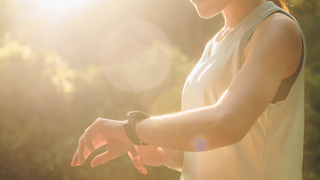
2. Wearables could exclude you from the social bonds of running with others
Crawley spent 15 months training in Ethiopia for his first book, Out of Thin Air where he observed what he sees as one of the biggest divergences between the Ethiopian and Western approaches to running – collectivism versus individualism.
“Even though I was training with some of the best athletes in the world, they still found ways of making running really fun. They weren't really obsessed with technology, necessarily. They saw it as a group activity that you had to do with other people in order to get better.”
In the West, running clubs might be growing out of concerns for safety, but there’s still an overarching trend toward individual success, technology and data.
There is plenty of evidence that exercising with others has benefits, from improved motivation to greater social bonds, and Crawley tells me that seems to be especially true with endurance sports.
“Enduring together seems to create really strong social bonds between people really quickly in a way that most other activities don't, and we don't really quite know why.”
Why Westerners often opt for the lone ranger approach to running is no doubt rooted in many complex sociological phenomena, but according to Crawley, wearable tools like training according to heart rate zones might be making the problem worse.
“When you get people who train really religiously by heart rate, it means that you can't really train together anymore.”
Either everyone in the group is pacing according to their own heart rate, and running separately, or everyone has to train according to one person’s heart rate, which can mean the general flow and freedom that so many of us hit the trail to experience is no longer possible.
“It seems like people would benefit from those kind of really strong social bonds that are created by by training together.”

3. Your watch can make you place limits on yourself
Wearable tech companies will tell you that access to the numbers can show you what you’re capable of achieving, but speak to the pros and they might tell you the precise opposite is true.
Like Bouillard, who ignored his pace during the UTMB because he says it plays games with his mind, Tour de France cyclist Tao Geoghegan Hart told Crawley he had to stop looking at his computer to claim a stage victory in 2020.
“The numbers were really high, and he thought if he kept looking at them he'd think, ‘Oh, I can't do this then, because that's that's higher than what I think I can do.’”
Your watch gives you a snapshot of what you think you’re able to do in terms of metrics, but if on game day you exceed those numbers you might pull back out of fear that you’re pushing yourself too hard.
“Being too attentive to the numbers can make you place limits on yourself that don't need to be there," says Crawley.
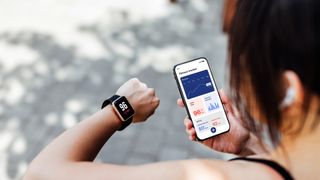
4. Humans aren’t robots – so why train like one?
When I trained regularly in Vail with endurance coach Ellen Miller, she had a strategy for those days when you wake up at 6 a.m. and just aren’t feeling it: "Come anyway and run for five minutes – if after five minutes you still don’t feel up it, go home."
Most of the time, you’d realize that you did have the energy, but on the rare times you quit, the worst thing that had happened was that you got out for a few minutes of fresh air at sunrise. And you usually learned something about yourself.
These days, my Coros Pace 3 tells me when I’m recovered enough to run again. Recovery times are based on a calculation of how long and intense my last workout was in light of my current fitness level and activity history. It eliminates the need for self-analysis and experience and simplifies things.
But for Crawley, "prescriptive" tech like Zoe telling you what to eat or Whoop telling you when to go to bed is a problem.
“It’s becoming less about giving us information that we can look at and consider and think about and then act on and more about just telling us what to do.”
“These things are all sold as giving us these privileged insights into how our bodies work, and I wonder if we're using too much of that data and just taking it all at face value, whether we're actually just blunting our ability to feel how we feel for ourselves.”
Working these things out for yourself isn’t just an important aspect of training; it turns your sport into a way to improve in other areas of your life. Training like a robot, on the other hand, might get you a podium spot, but it also might rob you of the joy of just running.
“We kind of tend to have this assumption that high-performance sport has to be sport with all the joy squeezed out of it, and I don't think that's true,” says Crawley.
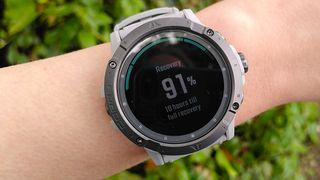
5. Tracking can have real benefits for runners
You might think this article is all about convincing you to chuck your Garmin in the sea and go back to running barefoot, but when Crawley went to Nepal to run a 60k mountain race, he realized there is at least one clear benefit to GPS watches: tracking.
“A lot of the Nepalese athletes that I met were really keen to get hold of good GPS watches. They would be navigating by following the little ribbons that they mark the course with, but the children steal the ribbons on the courses.”
Crawley lost at least seven kilometers just by going down the wrong tracks, adding more than 10 percent to his total distance, something that wouldn’t happen with GPS tracking (this is similar to what Jake Catterall told me about his Garmin Enduro during his 2,000k run across the Alps). Even if you're not racing, if you're a mountain runner there are clear safety aspects to better navigation.
So there are benefits to using a GPS watch, there just might not be as many as the ads have you believe.
Should we cast our watches aside? If you own a pricey Garmin Forerunner 955, the thought won’t even have crossed your mind. But it’s worth acknowledging that while you can have a lot of positive experiences with your watch, it might be good to be aware of some of the potential consequences of becoming a slave to it.
If running buys you a few minutes of freedom from the hustle and grind, ask yourself if you always want to use that time to supply tech corporations with data that they can use to get richer. Consider other training methods too – keep a training diary, get a real live human coach, use a Casio stopwatch (it works for Emile Cairess). And run with other humans. It’s good for you.
Julia Clarke is a staff writer for Advnture.com and the author of the book Restorative Yoga for Beginners. She loves to explore mountains on foot, bike, skis and belay and then recover on the the yoga mat. Julia graduated with a degree in journalism in 2004 and spent eight years working as a radio presenter in Kansas City, Vermont, Boston and New York City before discovering the joys of the Rocky Mountains. She then detoured west to Colorado and enjoyed 11 years teaching yoga in Vail before returning to her hometown of Glasgow, Scotland in 2020 to focus on family and writing.

